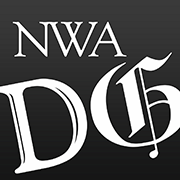
As President-elect Donald Trump considers new spending on public works, others are racing to make the case that infrastructure could include fast Internet networks, electric-vehicle charging stations, power transmission lines and drinking-water systems.
“Infrastructure doesn’t just mean roads and bridges. Infrastructure means a lot of different things to a lot of different people,” said Jason Grumet, president of the Bipartisan Policy Center. “We have to be confident that we’re investing in things with common benefits, not like digging holes. The outcomes have to be consistent with our national priorities.”
How that will be decided is anyone’s guess. Trump hasn’t said how he will stimulate infrastructure spending or whether projects will be funded in the public or private sectors.
Two of his advisers — private-equity investor Wilber Ross and University of California at Irvine business professor Peter Navarro — have floated the idea that a federal tax credit could cover 82 percent of the private equity needed for big projects.
They say that rather than setting national priorities, the Trump administration should use the tax credit to allow the private market to decide which projects to undertake.
“It would link increases in spending to reforms that streamline permitting and approvals, improve the project delivery system, and cut wasteful spending on boondoggle bridges and highways to nowhere,” they said in an Oct. 27 paper.
Ross and Navarro did not describe any limits on who would qualify for the tax credit, but they estimate that the federal government would hand out $137 billion worth of credits under their plan.
There is no shortage of volunteers.
IBM chief executive Ginni Rometty recently wrote a letter to Trump with her ideas for infrastructure. “As we build big, let’s also build smart,” she wrote. “The country should focus on infrastructure investments that incorporate Internet of Things technology and artificial intelligence to improve performance.
“And as infrastructure gets smarter, it also increases the need for cybersecurity, so that vital networks cannot be compromised,” Rometty added.
“We recommend that your infrastructure package include incentives for states and localities to build intelligent — and secure — roads, bridges, buildings and other public facilities.”
Many of the companies arguing for infrastructure are hawking their own products. IBM provides equipment and services for the Internet of Things, in which everyday objects can send and receive data. Mrinalini Ingram, vice president of smart communities at Verizon, wants to see Verizon networking technology embedded in streetlights and blue-light kiosks where pedestrians in danger can call police.
Other companies and workers imagine other things when they hear the word “infrastructure.”
The American Society of Civil Engineers gave the United States a D-plus in its 2013 report card on U.S. infrastructure. The professional group considered energy, schools, parks, rail, bridges, solid-waste facilities, dams, aviation, ports and drinking water.
Infrastructure also can include oil pipelines, and supporters believe that those are higher on Trump’s priority list.
“It’s a huge opportunity that doesn’t cost taxpayers money,” said American Petroleum Institute President Jack Gerard.
“We’re going to build some more pipelines that make sense, that are done with a workforce that is the most highly trained, safest in world,” said Sean McGarvey, president of the North America’s Building Trades Unions, half of whose members spend part of each year working on energy projects.
In addition, McGarvey said, workers could “refurbish the existing pipeline system” and “get some of those dangerous rail cars and trucks off the road.”
The administration of President Barack Obama had viewed renewable-energy projects as infrastructure projects. The Trump transition team has not said whether it views renewable energy the same way, though political analysts say Trump is more likely to pursue plans to bolster fossil fuels such as coal.
Many state and city officials still have lists with traditional needs.
Oklahoma City Mayor Mike Cornett, a Republican who is also president of the U.S. Conference of Mayors, favors things such as fixing aging water projects and leaking pipes “that won’t get loans” and where attracting private money is “not realistic.”
Schools also fall into that category. And Oklahoma City has redesigned streets to make them more pedestrian and bike friendly.
“The advent of the autonomous vehicle is probably going to have more to do with change in the built environment and infrastructure than anything we’ve encountered in our lifetimes,” Cornett said.
Washington, D.C., Mayor Muriel Bowser, a Democrat, has argued that affordable housing is part of the nation’s critical infrastructure, but Cornett disagreed.
“I don’t have much of an affordable housing issue,” Cornett said. “Our market rate in Oklahoma City is affordable housing in Washington, D.C.”
A Section on 11/20/2016